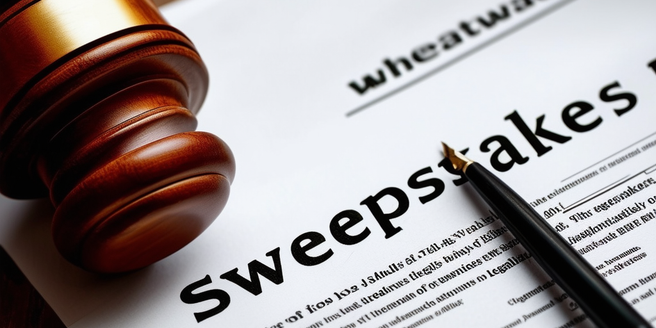Understanding Sweepstakes Rules

What Are Sweepstakes and How Do They Work?
Sweepstakes are promotional schemes where prizes are awarded to participants by chance, with no purchase necessary to enter. These contests are popular because they attract many entrants, leveraging the excitement of potentially winning a valuable prize. Companies often advertise heavily to ensure maximum participation. By investing in such promotions, businesses can increase their consumer base effectively. Organizations use sweepstakes to build brand awareness, collect customer information, and promote products. The mechanics typically involve an entry form, random draw, and clear rules to ensure fairness. Sweepstakes can also create a buzz around a brand, driving social media engagement. It’s important to note that sweepstakes differ from lotteries, which usually require a purchase for entry.
Key Legal Considerations for Sweepstakes Organizers
Organizers must ensure their sweepstakes comply with legal requirements to avoid fines and lawsuits. Key considerations include no purchase necessary clauses, clear disclosure of entry methods, prize details, and odds of winning. Additionally, organizers must be cautious of varying state and federal regulations, including prohibitions on deceptive practices. A thorough understanding of these differences is essential for smooth execution. To achieve this, it is imperative to stay updated on recent legal changes. It is also crucial to respect privacy laws when collecting participant information. Consulting with legal advisors helps navigate these complexities, ensuring the sweepstakes is both legally sound and credible. A well-executed sweepstakes can enhance brand reputation and build customer loyalty.
Analyzing Eligibility Requirements for Participants
Eligibility requirements are essential to define who can or cannot participate. Common criteria include age restrictions, residency requirements, and exclusions for employees or relatives of the organizing company. These requirements must be clearly stated in the official rules to prevent confusion and legal disputes. Furthermore, setting eligibility criteria also helps avoid potential conflicts of interest. Properly defined eligibility helps maintain the integrity of the sweepstakes and ensures that prizes are awarded only to legitimate participants. This not only fosters trust but also enhances the reputation of the organization. Additionally, age restrictions often align with legal mandates to ensure compliance with child protection laws. It is also crucial to review and update these criteria periodically to reflect any changes in legal standards or organizational goals.
Understanding the Official Rules and Fine Print
The official rules and fine print serve as the backbone of any sweepstake. They outline the terms and conditions, entry methods, eligibility criteria, prize descriptions, and procedures for identifying winners. Ensuring these rules are clear and comprehensive helps avoid misunderstandings and legal issues. Participants must have easy access to these rules, which should be written in plain language. A well-structured FAQ section can also assist in clarifying any uncertainties. Clarity and transparency in sweepstake rules foster trust and participation. It’s essential for organizers to enforce these rules consistently to maintain transparency and trust among participants. Additionally, regular updates to the rules help accommodate any necessary changes during the sweepstake period. Detailed terms help ensure a seamless and enjoyable experience for all involved.
Tips for Ensuring Sweepstakes Transparency and Fairness
Transparency and fairness are crucial for successful sweepstakes. Organizers should clearly communicate all rules, prize details, and entry methods. Furthermore, maintaining consistency in all communications avoids confusion among participants. Additionally, setting specific deadlines for each stage of the sweepstakes can help manage expectations. Random drawing methods should be verifiable and fair, often conducted by third parties for added credibility. Regularly updating participants on the progression of the sweepstakes builds trust. By doing so, participants feel more involved and confident in the process. It’s also beneficial to publicly announce winners and provide a way for participants to confirm entry. These steps help ensure that the sweepstakes is both enjoyable and trustworthy, fostering positive brand interactions.